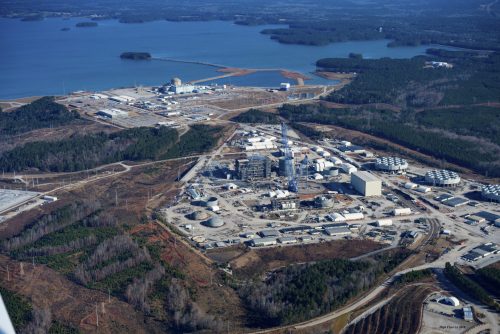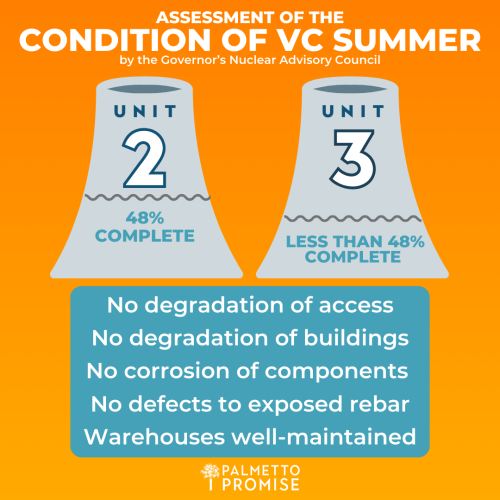Commentary: Proceed with eyes wide open on VC Summer reboot
This op-ed by Palmetto Promise Research Fellow Jennifer Buckley was originally published in the Post and Courier. It also has been published in FitsNews.
South Carolina’s dormant nuclear energy ambitions could be stirring back to life.
Santee Cooper announced Jan. 22 that it is seeking proposals to acquire and complete, or propose alternatives for, the two partially constructed reactors at the V.C. Summer Nuclear Station. This action was spurred by S.51, a joint resolution put forth by Sen. Tom Davis, R-Beaufort, and more than 35 co-sponsors encouraging Santee Cooper to issue a request for proposals to explore the potential revival of the two reactors that were abandoned in 2017. After nearly a decade of collecting dust, and with $9 billion sunk into their incomplete construction, the reactors in Jenkinsville could enjoy new life.
The collapse of the original V.C. Summer project in 2017 was triggered by the bankruptcy and mismanagement of the contractor, Westinghouse Electric Company. The ambitious project initially promised affordable, clean energy and economic growth but was ultimately derailed by cost overruns, delays and failed oversight. The disaster left many South Carolinians with ballooning utility bills that customers are still grappling with, and several utility executives went to prison.
After the first debacle, Westinghouse could be the biggest beneficiary of the project restart. Westinghouse is owned by uranium miner Cameco and Brookfield Asset Management, and Barron’s reports that Cameco stock was up 5.2% the day of Santee Cooper’s announcement, a reflection of investor optimism about the project’s potential.
Understandably, the General Assembly is wary of a déjà vu situation: government incentivizes a state agency and an investor-owned utility to partner on a nuclear project with the costs and risk resting squarely on the shoulders of ratepayers. Remember the Base Load Review Act? Without clear safeguards and transparency, history could repeat itself, further eroding public trust in South Carolina’s energy sector.
At the heart of this initiative is the state-owned utility Santee Cooper. Since its creation in 1934, Santee Cooper has operated under public ownership, meaning its projects are intended to serve the public interest, with “profits” reinvested into infrastructure or returned to ratepayers. This structure was historically intended to ensure that South Carolina’s energy decisions were made with accountability to the public in mind.







